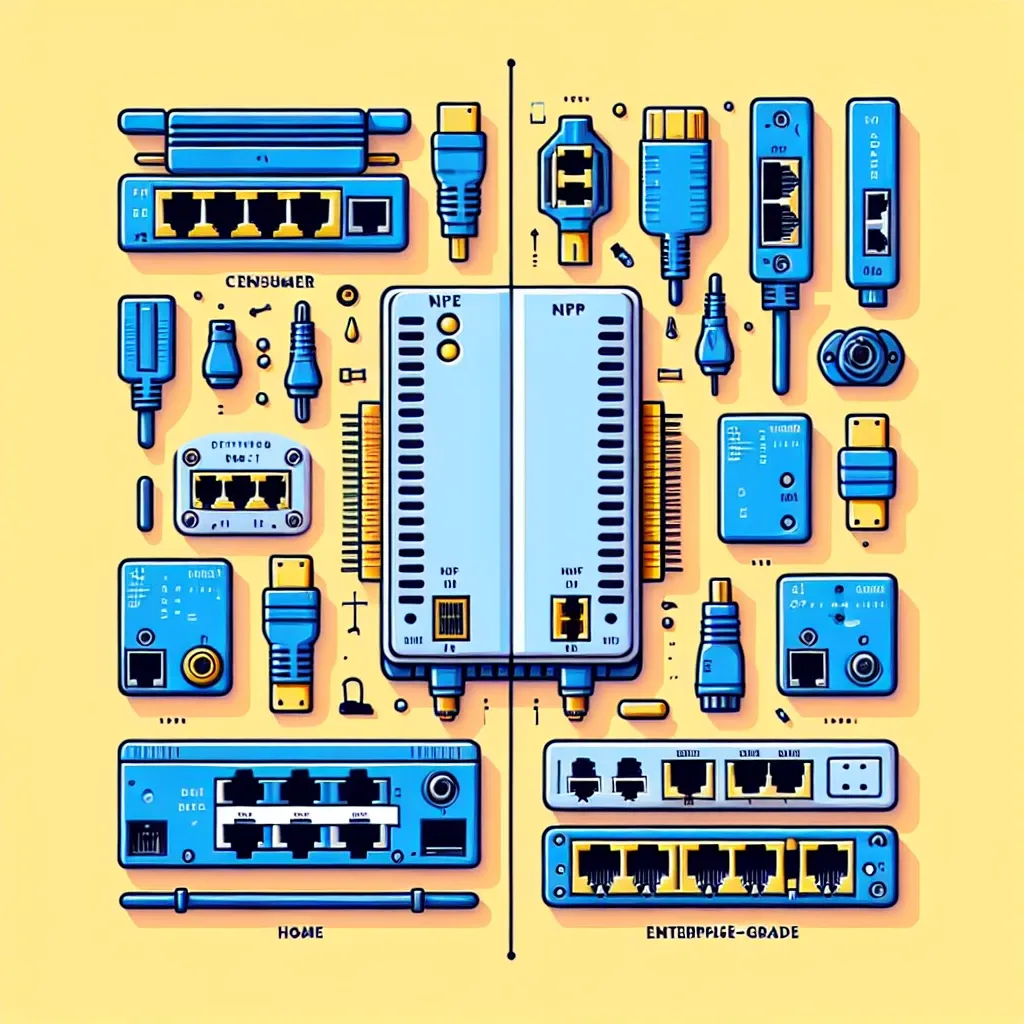Network adapters are crucial components of modern connectivity, allowing devices to interface with networks efficiently. While seemingly similar in their basic function, consumer-grade and enterprise-grade network adapters have distinct differences that cater to specific needs. Understanding these differences can help you make informed decisions for both personal and business uses.
Below is a table summarizing the key differences between consumer-grade and enterprise-grade network adapters:
| Feature | Consumer-Grade Network Adapter | Enterprise-Grade Network Adapter |
|---|---|---|
| Performance | Adequate for general browsing, streaming, and light gaming | High performance with low latency for data-intensive and mission-critical applications |
| Reliability | Moderate reliability, suitable for home usage | Highly reliable, designed for 24/7 uptime and redundant components |
| Security | Basic security features such as WEP, WPA, and WPA2 | Advanced security protocols including WPA3, VPN support, and built-in firewalls |
| Cost | Typically low-cost, accessible to general public | High-cost, justified by advanced features and reliability |
| Management | Simplified, user-friendly interfaces | Advanced management tools for network monitoring and control |
| Use Case | Ideal for home networks, small offices, and non-mission-critical tasks | Designed for large corporations, data centers, and critical infrastructure |
Performance
Consumer-grade network adapters are generally designed to handle basic tasks such as web browsing, social media, streaming, and occasional gaming. They offer satisfactory performance for these activities but might struggle under more demanding conditions like large file transfers or high-definition video conferencing.
On the other hand, enterprise-grade network adapters prioritize performance above all else. These adapters are built to minimize latency, handle larger data loads, and maintain high throughput even under heavy network traffic. They are tailored for environments where performance cannot be compromised, such as data centers and large corporate networks.
Real-World Scenarios
- Consumer-Grade: Streaming a 4K movie or playing an online game.
- Enterprise-Grade: Handling multiple simultaneous HD video conferences without latency issues.
Reliability
When it comes to reliability, consumer-grade network adapters offer moderate levels of dependability. They are built to withstand the typical usage cycle of an average home but are not designed for 24/7 operation or high fault tolerance.
Enterprise-grade network adapters, however, are the epitome of reliability. They are engineered with redundant components and failover capabilities that ensure continuous operation. These adapters are often tested under extreme conditions to guarantee that they can handle both expected and unexpected loads without compromising network integrity.
Importance of Reliability
- Consumer-Grade: A temporary network outage that disrupts streaming or online gaming.
- Enterprise-Grade: Ensuring that mission-critical applications run seamlessly without any interruption, 24/7.
Security
Security is a paramount concern for any network, but the level of security needed can vary dramatically between consumer and enterprise settings. Consumer-grade network adapters typically come with basic security features such as WEP, WPA, and WPA2.
Enterprise-grade network adapters go much further, incorporating cutting-edge security protocols like WPA3, and often supporting VPNs and built-in firewalls. These adapters also include advanced features for monitoring and responding to potential threats in real-time.
Security Features Comparison
- Consumer-Grade: Basic encryption to protect data from being easily intercepted.
- Enterprise-Grade: Comprehensive security suite to protect sensitive data, comply with regulations, and prevent breaches.
Cost
Cost is a vital consideration for most buyers. Consumer-grade network adapters are generally inexpensive, making them accessible to the general public. They provide good value for the price, especially for light to moderate usage.
Conversely, enterprise-grade network adapters are significantly more expensive. However, the high cost is justified by their advanced features, superior performance, and reliability. For businesses, investing in high-quality network adapters can lead to long-term savings by preventing costly downtime and enhancing productivity.
Cost Justification
- Consumer-Grade: Low upfront cost, suitable for individual users or small offices.
- Enterprise-Grade: Higher initial investment, justified by enhanced capabilities and long-term benefits for large organizations.
Management
Management of network adapters is straightforward for consumer-grade options. They usually feature user-friendly interfaces that require minimal technical expertise to set up and maintain. Configuration wizards and intuitive GUIs are typical of these devices, making them accessible to non-specialists.
Enterprise-grade network adapters, in contrast, come with advanced management tools designed for IT professionals. They offer detailed analytics, remote monitoring, and centralized control panels to manage complex networks efficiently. This makes them ideal for large-scale implementations where specialized knowledge is crucial for optimal performance.
Management Complexity
- Consumer-Grade: Simplified setup and management for everyday users.
- Enterprise-Grade: Advanced tools and features designed for IT departments and network administrators.
Use Case
The use case for each type of network adapter is one of the most significant differentiators. Consumer-grade adapters are designed for individual users and small offices where high performance and advanced features are not critical. They fulfill the needs of typical household activities such as watching online videos, browsing, and small-scale gaming.
Enterprise-grade adapters, however, are essential for environments that require robust performance, advanced security, and high reliability. They are suitable for large corporations, data centers, and even critical infrastructure such as hospitals and financial institutions.
Use Case Scenarios
- Consumer-Grade: Home networks, small office setups, casual gaming, and entertainment.
- Enterprise-Grade: Large business networks, data centers, mission-critical services, and high-traffic websites.
In conclusion, the difference between consumer-grade and enterprise-grade network adapters is profound. Each serves a unique purpose and meets specific needs that range from everyday home use to robust, mission-critical applications. By understanding these differences, you can choose the right network adapter to ensure optimal performance, reliability, and security for your requirements.

